With a knack for blending creativity, strategy, and human-centricity, this seasoned service designer’s journey is a testament to adaptability and passion.
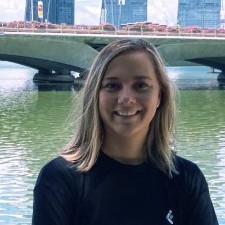
Ever wondered about the people behind the scenes doing the challenging but important work of service design within organizations? What’s it really like to be a service design professional on the inside, where implementation, politics, middle management, and conflicting interests come into play?
In this series, we’re excited to bring you up close and personal with (alumni) members of the ⭕️ Circle community to learn about who they are, what they do, and what drives them to make a difference. Through their stories, we hope to give you a better sense of what it’s like to be on the inside, and inspire you to take the leap or steer clear.
Join us as we chat with Jenthe van Gastel, a service designer based in Belgium 🇧🇪.
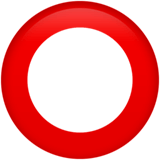
The service design dream team you wish you had around you each and every day. Now available inside the Circle community!
➜ Learn moreBackground
How did you first discover service design, and what inspired you to pursue it?
During my last master’s program in Innovation & Entrepreneurship, I touched upon concepts such as the business model canvas. However, it wasn’t until an ex-colleague shared a service design job opening with me that I discovered this type of role existed. I was thrilled; it aligned perfectly with what I sought—people-oriented, creative, analytical, and strategic.
The questioning and listening skills I built up during my initial job as a recruitment consultant proved very valuable, and the curiosity & drive I had shown during the job interview ultimately convinced the hiring manager to offer me the position—a decision I remain grateful for today.
What’s your favorite way to unwind after a long day of work?
When I’m not on the tennis court or cycling, I find solace in tidying up my home. There’s something satisfying about creating order from chaos, not only in my job but also in my personal space. 😊
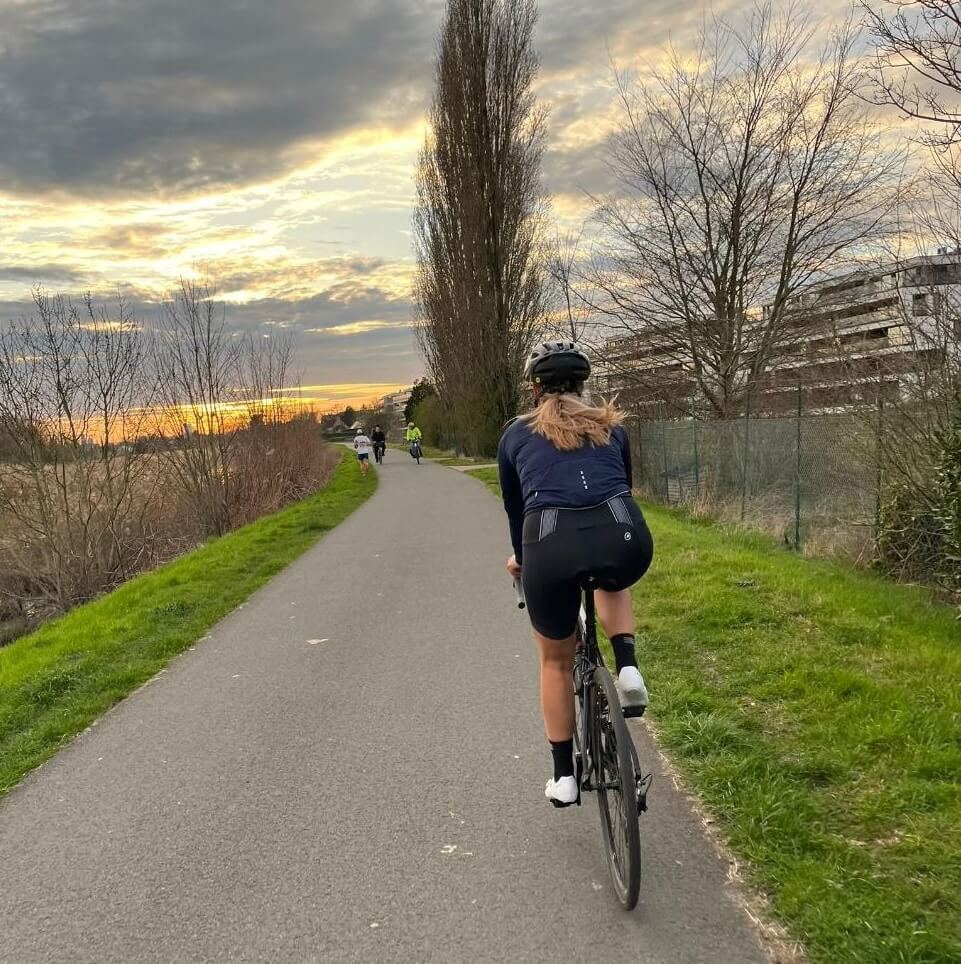
As I organize, I listen to podcasts—ranging from design and news to true crime and biographical stories. It’s a calming routine that brings me peace of mind & inspiration at the same time.
What’s the best piece of advice you’ve ever received?
“Become great in what you do, and you will naturally get noticed.”
I got this advice from a former senior executive who used to work for the corporate I work for now.
While it might seem necessary to focus on building ‘political’ relationships for career advancement, the real key lies in delivering exceptional results.
By consistently shining in your area of expertise, you create a positive impact that resonates. Inherently, this also means embracing a growth mindset and seizing the opportunities that are given to you, even if they might be out of your comfort zone.
What’s a hidden talent that you have that others may not know about?
I have ‘green’ fingers; I love plants and I’m good at taking care for them. As I’m living in a city, I don’t have a big garden, so I focus on nurturing my indoor plants for the moment. In the future, I hope to have a real garden to take care of.

In-house perspective
Can you tell us about how you ended up in your current role?
Before my current role, I worked abroad in Singapore for a Belgian AI scale-up. I was fortunate to be selected for a scholarship program, which allowed me to undertake a business development project for a Belgian company outside of Europe. My task was to establish their first Asian office in Singapore and drive local business development efforts. During this experience, I gained valuable insights into AI, immersed myself in Asian culture, and learned the intricacies of running a business independently.
As time went on, I discovered that my true passion lay in creative thinking and design rather than commercial business development. Having not seen our families & friends for over a year because of COVID, it was time to return back home. Initially, I considered returning to a design agency or consultancy, but Proximus presented an intriguing opportunity. Joining a large corporate environment was a leap, but I embraced it.
Looking back, I’m grateful for that choice—it has shaped my journey significantly.
I’ve had the chance to evolve within the dynamic landscape of a big corporation. From being a coach to leading a full team, I now contribute to DesignOps, shaping the current and future strategy for the business and service design practice at Proximus.
Can you share some of the differences you have experienced working in-house versus on the agency side of service design? What do you think are the benefits and challenges of each?
These are the points I experienced most;
Consultancy Side:
- Benefits:
- Fast-Paced Environment: Working in a consultancy I experienced a faster pace of work. The variety of projects allowed for quick skill development, and I gained exposure to diverse industries and challenges.
- Challenges:
- Limited Follow-Through: Unfortunately, I rarely witnessed how the solutions or improvements we designed actually came to life. By the time a project concluded, I was already immersed in another assignment.
In-House:
- Benefits:
- Deep Dive and Collaboration: In an in-house role, you can dive deeper into project content. Collaborating with multi-disciplinary teams, I could see a project evolve from inception to completion.
- Guaranteed Impact: The impact of my work felt more assured in-house. Even if a project didn’t go live as planned, there was time to pivot, learn, and strengthen relationships.
- Challenges:
- Stakeholder Management: As an in-house designer, effective stakeholder management becomes crucial. Building and nurturing relationships is essential for success, and this takes time.
How do you approach working with cross-functional teams and stakeholders who may not have a background in design? What strategies have worked well for you in the past?
When collaborating with cross-functional teams and stakeholders who lack a design background, I find that actions speak louder than words. For instance, involving them in user interviews can work wonders. Or letting them experience a well-prepared and facilitated workshop. Or giving a demo of your tangible work, and using customer quotes which can really reinforce your message.
Another approach is to ‘translate’ design exercises into non-design language. Some stakeholders perceive our design terminology as ‘fluffy’ or abstract. To bridge this gap, I try to use their language or draw analogies they’re familiar with to ensure they grasp the message or goal clearly.
Wins & failures
Can you tell us about a (service design) project that you are particularly proud of? What made it stand out for you?
It’s not a particular project, but more a mindset shift I managed to achieve with a project team I worked with. They weren’t super familiar yet with service design. By involving them in customer interviews & workshops I witnessed them thinking more customer-centric & outside-in.
They started realizing the risk of not testing assumptions and valued the different perspectives (from both customers and business & technical stakeholders) I consolidated before jumping to conclusions.
I’m proud of how I managed to inspire and broaden their thinking, creating a ripple effect to other teams & designers.
Can you share a story about a time when you experienced a setback or failure in your work, and what did you learn from that experience?
In one of my first consultancy assignments as junior designer, I organized a journey mapping workshop. During the workshop, participants began questioning the relevance of the exercise, and they were right. My initial approach was to follow the ‘process’ of design thinking, almost like ticking off boxes in a checklist. However, I failed to consider the true goal I wanted to achieve.
The lesson I learned was profound:
Blind love for the double diamond and a strict step-by-step process often doesn’t work as reality is far messier.
As a coach, it’s one of the most common bits of advice I give now: Instead of starting from an exercise, start with the impact you believe you can make as a designer. What goal do you want to reach? Only then should you select the exercises that serve that purpose. Design thinking isn’t linear; it’s contextual and involves various stakeholders. Identifying what’s most critical and focusing on that is key.”
Can you share a story where being part of the Circle helped you to overcome a challenge?
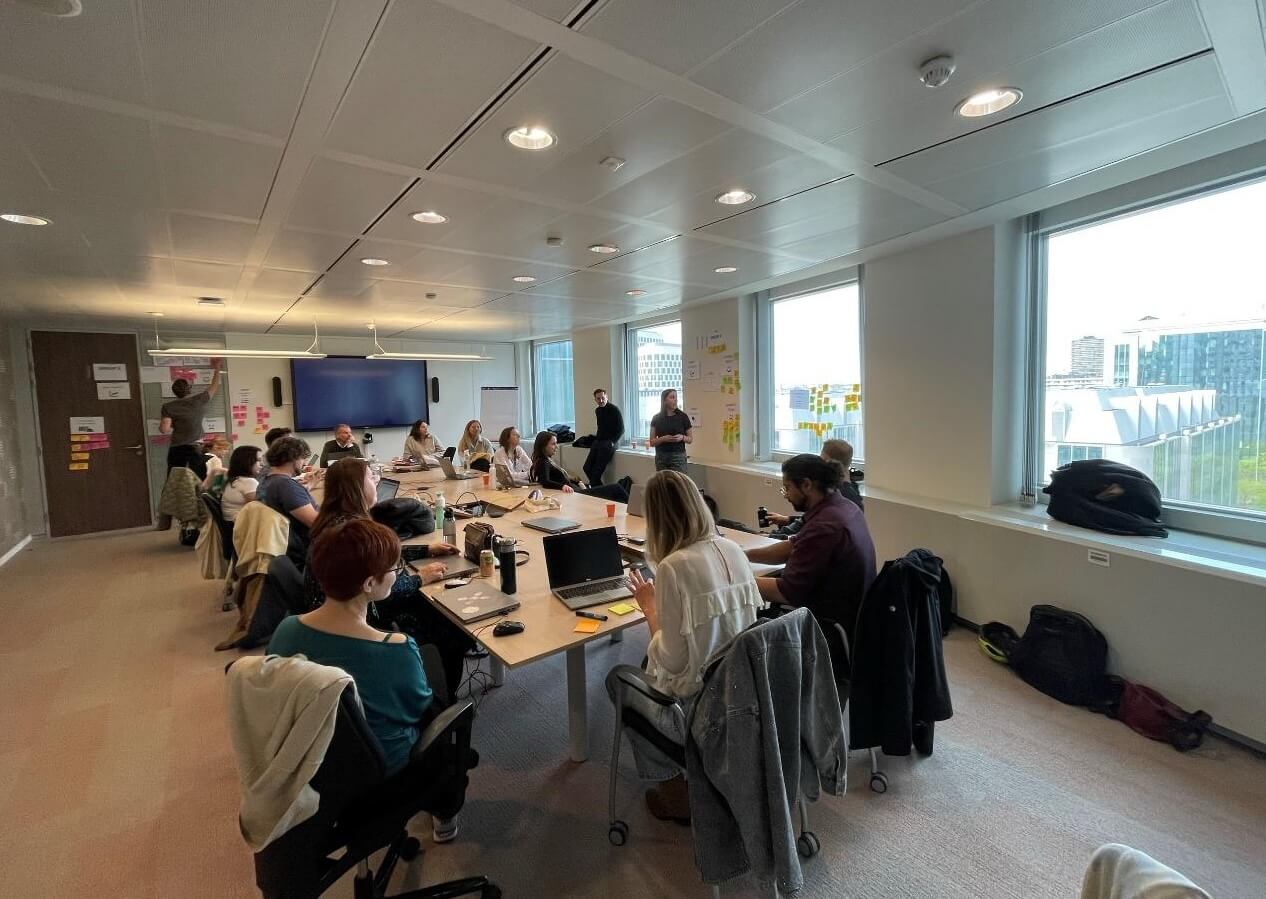
Last summer, I hosted a dinner table session focused on service design growth frameworks. I was curious to know what type of growth paths are foreseen for other in-house service designers —especially since we didn’t have any formal structure at the time. With nearly 20 business and service designers on our team, each with unique experiences, strengths, and personalities, I felt the need to define a skills matrix as a standard growth framework for skill development.
During the dinner table discussion, participants shared valuable examples and stories. These insights helped me greatly.
As a result, we’ve now created the first MVP, and you can catch a sneak peek of the outcome on the Circle forum!
Advice
What advice do you have for someone just starting out in service design? What skills or knowledge do you think are most important for success in the field?
Don’t worry if you lack an academic background in (service) design. Many successful professionals in our field come from diverse backgrounds, drawing on skills acquired in previous roles and experiences. For instance, my questioning abilities as a recruiter proved invaluable in my transition to service design.
As for essential skills, understanding human behaviour—along with the biases that influence it—is paramount. However, empathy shouldn’t be limited to users alone; extend it to your stakeholders as well. Consider their goals and perspectives while crafting meaningful solutions.
What does the Circle community offer that you can’t get through books, conferences or courses, and how important is that to you?
For me, it’s two things:
- Reassurance and encouragement: the challenges we face as in-house service designers are often similar. Knowing that provides reassurance, reminding that we’re not alone in our struggles. Hearing how others approach them provides different perspectives, fresh ideas, and encouragement.
- Spontaneous Inspiration: While books and structured courses offer valuable knowledge, they often follow a predefined path. In our community sessions, it’s nice to get unanticipated, real-world nuggets of inspiration which can ignite your thinking 😉
Future
What do you think is the most exciting trend or development in service design right now? How do you see the field evolving in the future?
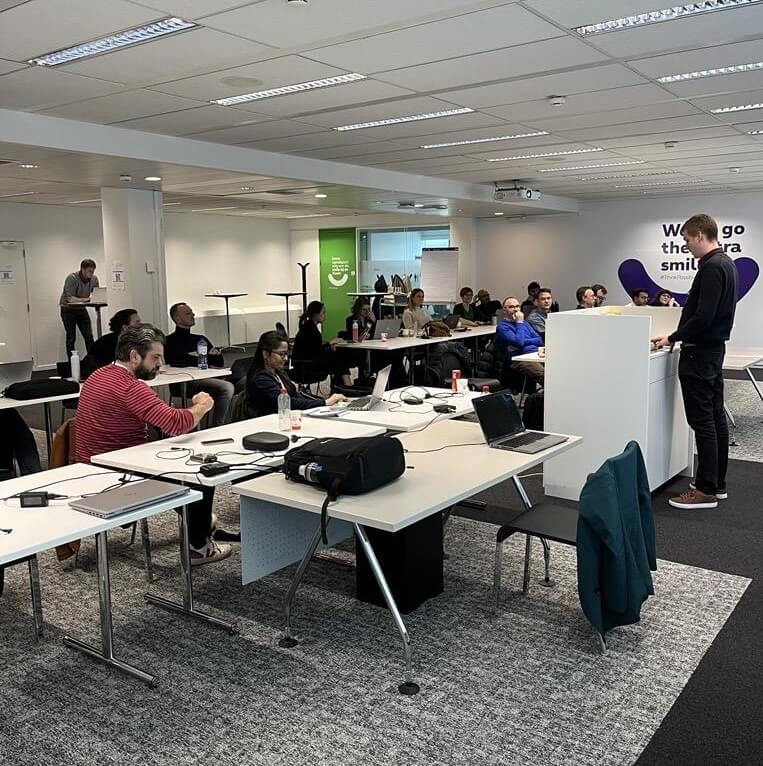
Journey management. At my organization, I’ve dedicated significant time to this area because I believe it offers an optimal way to break down silos and truly consider the end-to-end experience of a product or service. Even in agile environments, silos persist—albeit different ones than before. Journey management also has the potential to shift our focus from a product-oriented mindset to a more service-oriented company.
While we still have a long road ahead, the collaboration benefits it has already brought us are promising.
What kind of projects or initiatives are you interested in working on? Are there any particular connections or collaborations that you are seeking at the moment?
I have a keen interest in projects related to digital inclusion. Working in the telecommunications industry, I’ve witnessed the digital divide widening. In Belgium, nearly half of the citizens fall into the category of ‘digitally vulnerable,’ lacking the necessary digital skills to keep pace with technological advancements. While we’re all learning, our progress often goes way slower than the rapid evolution of technology, increasing the gap. Contributing to or deepening my understanding of this critical topic always intrigues me.
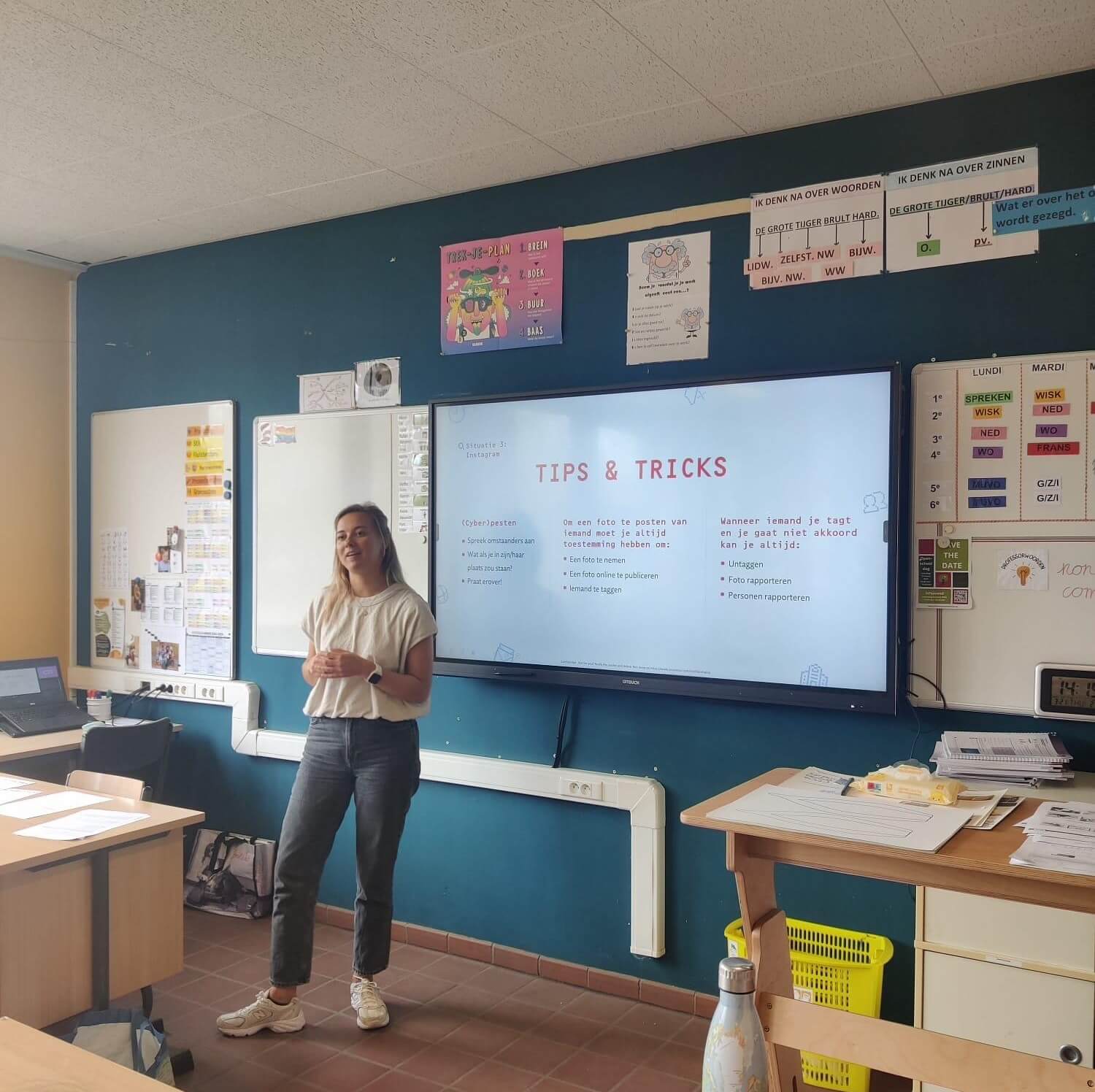
If you could ask any question to other service design professionals, what would it be? What insights or perspectives are you curious about?
What do you believe our role will look like in 10 years?
What influences / trends / technologies will have played a role?
Wrap-up
Jenthe’s journey into service design was such a serendipitous encounter. It was a revelation, aligning perfectly with her aspirations for a role that melded creativity, strategy, and human connection. From her initial skepticism to landing the job, every step paved the way for her growth.
In every twist and turn, Jenthe’s journey embodies the essence of service design—adaptive, empathetic, and endlessly inspiring. Here’s to her unwavering dedication and the stories yet to unfold. Cheers to Jenthe! 🌟
As we honor professionals like Jenthe, let’s unite in our pursuit of service design excellence and collaborative innovation. Together, let’s chart the course for a future filled with exciting possibilities in this dynamic field. 🚀
